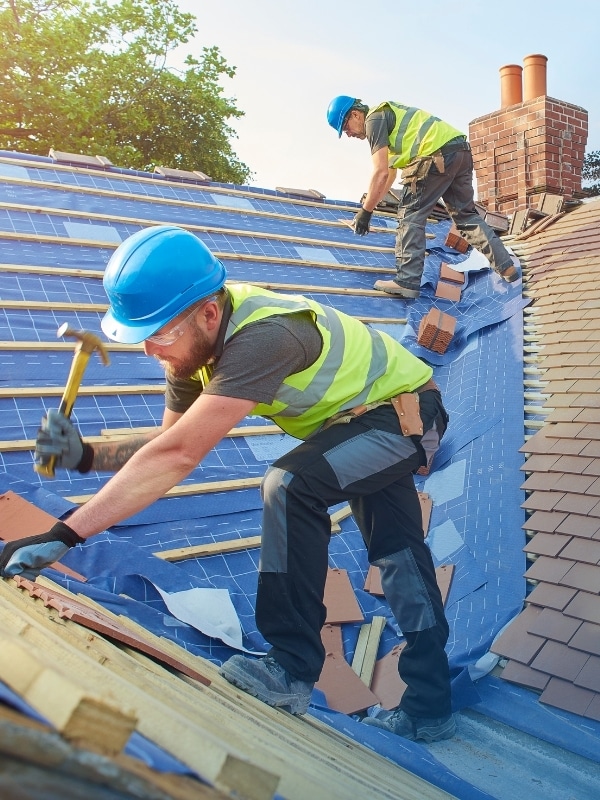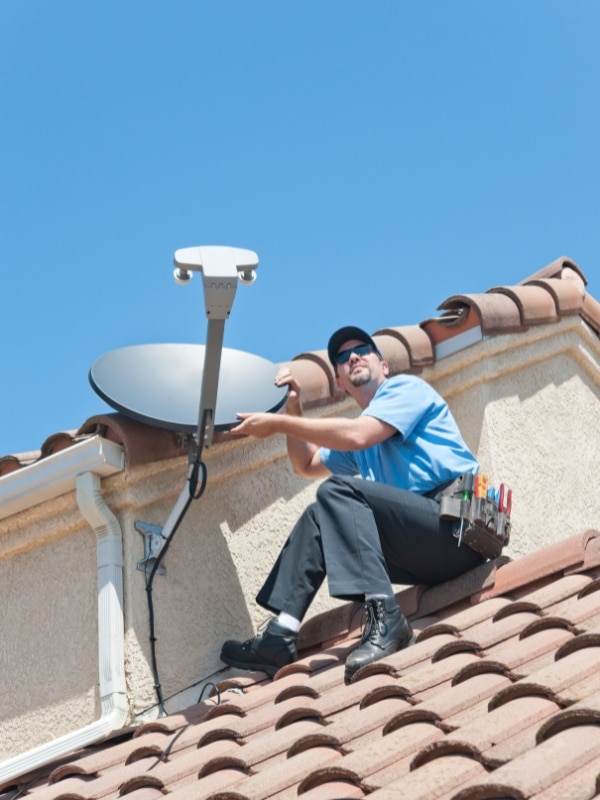Commonplace House Changes Wanted for Sun Panels
Preparing your home for solar is important to ensure the installation goes off without a hitch. While most solar installations are straightforward, there are many instances where pre-planning is important and modifications to the home are required. In this article, we’ll look at some of the key considerations to ensure your home’s readiness for solar. Solar installation prep is usually easier than you think but some additional costs may be involved.
On this page
- Assessing your home for solar suitability
- Detailed modifications for home readiness for solar
- Electrical rewiring of your home
- Upgrading your switchboard
- Modifying the structural integrity of your roof
- Repairing or replacing the roofing material
- Pruning or removing trees that would cast shade over the panels
- Trenching for electrical conduit
- Upgrading the grid connection
- Moving obstructions on the roof
- Running conduit for future battery/EV charger installation
- Conclusion
Assessing your home for solar suitability
The first and most crucial step to preparing your home for solar is assessing whether your home is suitable. There are a few instances where solar may not be possible:
- Apartment dwellings or high-rise buildings
- Heritage-listed homes, or other restrictions from the local government
- No access to the sun – too much shade from nearby structures
- The structural integrity of the dwelling prohibits solar installation
While these instances are rare, you may find that solar simply is not feasible for your circumstances.
For suitable homes, you may find that modifications, repairs, or upgrades may be required to go ahead with the solar installation. The following are some possible modifications, including how likely they are to be required:
- Electrical rewiring of the home (unlikely)
- A switchboard upgrade (possible)
- Improving the structural integrity of your roof (unlikely)
- Repairing or replacing the roofing material (possible)
- Pruning or removing trees that would cast shade over the panels (likely)
- Trenching for electrical conduit (unlikely)
- Upgrading the grid connection. This will be done in concert with your DNSP (unlikely)
- Moving obstructions on the roof – pool heating, HVAC systems, Antennas, etc (possible – unlikely)
- Running conduit for future battery/EV charger installation (possible)

Detailed modifications for home readiness for solar
Let’s look at these possible modifications in detail and what you might expect to pay.
Electrical rewiring of your home
Unlikely
Rewiring a home for solar power may be necessary to ensure safety, compatibility, and efficiency. Older homes often have outdated electrical systems that might not handle the additional load from solar panels or meet current safety standards. Installing proper grounding and ensuring dedicated circuits for solar components like inverters are essential steps. These modifications help integrate the solar system effectively and comply with local building codes and electrical standards, optimising the flow of electricity and protecting the system from electrical surges.
Additionally, rewiring can be crucial when integrating battery storage systems, which store excess energy for use during low solar production or power outages. Proper wiring ensures that energy is efficiently utilised or stored, enhancing the overall performance of the solar power system. Consulting with a licensed electrician and a solar professional helps determine specific rewiring needs, ensuring the home’s electrical infrastructure is ready for the new technology.
Possible additional cost: $3,000 – $9,000
Upgrading your switchboard
Possible
Upgrading the switchboard, or electrical panel, is often necessary when installing solar panels in Australian homes to ensure safety, compliance, and system efficiency. Many older homes have switchboards that cannot handle the additional electrical load generated by a solar power system. Some switchboards simply do not have room for the additional poles (slots for circuit breakers). Modern solar installations require a switchboard that can manage bidirectional power flow, meaning it must handle electricity both from the solar panels and to the grid. Upgrading the switchboard ensures it can safely distribute this increased electrical load, preventing potential overloads or electrical faults.
Additionally, Australian electrical standards and regulations may mandate certain upgrades to the switchboard to accommodate solar systems. These regulations ensure that all components of the solar installation, including inverters and safety switches, are properly integrated into the home’s electrical infrastructure. An upgraded switchboard often includes necessary safety features, such as circuit breakers and RCDs (Residual Current Devices), to protect against electrical hazards. Ensuring the switchboard meets these standards is crucial for both passing inspections and guaranteeing the long-term safety and functionality of the solar power system.
Possible additional cost: $1,000+
Modifying the structural integrity of your roof
Unlikely
Structural modifications to your roof may be required when installing solar panels to ensure the roof can safely support the added weight and withstand environmental stresses. Solar panels and their mounting hardware add significant weight to the roof, which can be problematic for older or weaker structures. Reinforcing the roof’s framework ensures it can bear this additional load without risking damage or collapse. This may involve adding extra support beams, strengthening existing structures, or repairing any damage to the roof to provide a solid foundation for the solar installation. In rare cases, the entire roof may need replacing.

Furthermore, the roof’s design and condition can impact the efficiency and safety of the solar panels. If the roof is uneven, damaged, or made of materials that are difficult to work with, modifications may be necessary to create a suitable surface for mounting the panels. Ensuring the roof is in good condition and appropriately angled to receive maximum sunlight is crucial for optimising the solar system’s performance. Addressing these structural issues beforehand not only enhances the system’s efficiency but also extends the lifespan of both the roof and the solar panels.
Possible additional cost: $1,000 – $20,000 (depending on whether minor changes or a complete replacement is required)
Repairing or replacing the roofing material
Possible
Some roofing materials are more suitable for solar than others. Metal roofs, for example, are the easiest to affix to the mounting system for your panels. Tiled roofs, depending on what they’re made of, are generally easy to work with. You will need at least 20 spare tiles for the installation. There are instances where your roof will either need to be repaired or completely replaced before the solar installation can go ahead.
A roof made from asbestos is not suitable for solar. This will require the entire roofing material to be replaced for the installation to go ahead. The cost of this will vary greatly depending on the removal process and the material replacing the asbestos. Roofs with damage will need to be repaired before adding solar. This is to ensure that your roof is watertight and that it is compliant for warranty and insurance purposes. Repairs could be minor or extensive and will determine the overall cost.
Possible additional cost: Repairs: $200 – $5,000, Replacement: $7,500 – $85,000.
Pruning or removing trees that would cast shade over the panels
Likely
Many established homes will experience shade from nearby trees. In most instances, a simple and regular prune will ensure that your panels are free from shade. For large, established trees, extensive pruning or complete removal may need to be considered. Any shade cast on your solar panels will drastically reduce the overall performance of the system. The removal of trees may not be possible where the tree is located in your neighbour’s yard or on council property. If shading from trees on some of your panels will be an issue, and tree pruning or removal is not possible, you may wish to consider adding microinverters or power optimisers to the affected panels.

Possible additional cost: $300 – $20,000 for tree removal
Trenching for electrical conduit
Unlikely
Trenching may be required when electrical cabling needs to run underground. This would usually occur when the solar system, or part of it, is to be placed on a detached structure, such as a shed or garage. Trenching may also be required to upgrade existing underground cabling. This is more likely to be required on rural properties.
Possible additional cost: $70 to $150 per metre
Upgrading the grid connection
Unlikely
Upgrading the grid connection for solar power may be necessary to handle the increased electrical load and ensure safe and efficient energy transfer. A typical grid connection might not be designed to accommodate the additional power generated by a solar system, especially if it involves feeding excess energy back into the grid. Upgrading the grid connection ensures that the system can manage the bidirectional flow of electricity, preventing potential overloads and ensuring compliance with local utility requirements.
Additionally, older grid connections might lack the necessary infrastructure to support modern solar technology, such as advanced metering systems or appropriate safety mechanisms. Enhancing the grid connection can involve installing new meters, upgrading circuit breakers, and ensuring the electrical panel can handle the increased capacity. These upgrades are crucial for optimising the performance of the solar system, improving energy efficiency, and ensuring the safety and reliability of the entire electrical system.
This task would usually be undertaken by your solar installer and with approval and guidance by your DNSP.
Possible additional cost: Basic upgrades: $500 – $3,000, Extensive upgrades: $3,000 – $10,000+

Moving obstructions on the roof
Possible – Unlikely
Your solar panels will require a large, unobstructed portion of your roof. In some instances, existing structures, such as your HVAC system, exhaust vents, pool heating, solar hot water, and antennas, will need to be worked around or moved. The most common structure that is likely to be moved will be an antenna or satellite dish. These can often be moved at minimal expense and will usually be carried out by your solar installer. For larger structures, a cost-benefit analysis will take place. Moving these structures will likely involve other trades. Some structures simply cannot be moved, such as skylights, and will be worked around where practical.

Possible additional costs: HVAC system: $1,000 – $5,000, Exhaust pipes: $200 – $1,000, Pool heating systems: $1,000 – $3,000, Solar hot water system: $2,000 – $5,000, Antennas/satellites: $100 – $500
Running conduit for future battery/EV charger installation
Possible
When you work with a solar retailer to get a quote, they will ask you questions about your future energy needs. Adding a battery storage system and/or EV charger might not be feasible or necessary now, but you might wish to add one in the future. Adding the conduit for future installation now, when your solar system is being installed, is usually far more cost-effective than adding it later. This will result in reduced labour requirements in the future and, in most cases, a simple plug-and-play for the battery/EV charger. Energy Matters highly recommends planning ahead and adding the conduit when your solar is installed. Retrofitting can present issues in the future – so please plan ahead!
Possible additional costs: Battery or EV charger conduit only: $500 – $1,500, Conduit for both: $1,000 – $3,000
Conclusion
Most homes will experience straightforward solar installations and should not require any modifications beyond the addition of the panels and inverter. Preparing your home for solar involves assessing your property and making any necessary changes to ensure home readiness for solar. Should any modifications be required, the installer will run through everything with you and it will all be optional. Keep in mind that choosing not to modify your home may result in a solar system not suited to your needs, thus reducing the return on investment.
If you’re ready to add solar to your home, let Energy Maters give you a helping hand! We provide a FREE service whereby we connect you with up to 3 local installers who will provide you with no-obligation solar quotes. Energy Matters is one of Australia’s most trusted for solar quotes due to our high customer satisfaction and industry recommendations. To get started, click the button below!
The post Common Home Modifications Needed for Solar Panels appeared first on Energy Matters.


No Comments